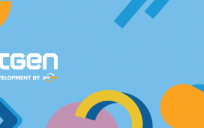We’re blogging from the Next Generation of Government Training Summit. Follow along @NextGenGov and read more blog posts here.
In one of our final keynote presentations, Cristin Dorgelo provide insights on her experience as an entrepreneur and shared her version of how agencies can capitalize on the wisdom of the crowds to create new ways to solve complex government problems.
Cristin Dorgelo is currently the chief of staff in the White House office of science and technology. She has had experience starting companies, working in a innovator, a startup company and also used to be at the X-prize foundation.
“There is no better place to be an entrepreneur than right where I am now,” Dorgelo said. The federal government has an incredible chance to influence change in other sectors. Whether if it is through creating new regulations, releasing data or creating new ways to deliver services, the federal government plays an essential role to help craft and influence markets.
But in order to do that, government must take more risks and identify moon-shot goals. Dorgelo shared how this term has made its way into government. “A 21st century moon-shot is an audacious and compelling goal that is intrinsically compelling to a variety of professionals from sectors, who want to wake up and work on it,” said Dorgelo.
One example she provided was “The BRAIN Initiative,” (Brain Research Through Advancing Innovative Neurotechnologies) which was created by President Obama as a new way to research and revolutionize the understanding of the human mind, and learn new ways to cure brain disorders.
The initiative provides $100 million investment to scientist to provide them the tools they need to understand how our brain thinks and learn. Funding is also coming from DARPA, NSF, Allen Institute for Brain Science, Howard Hughes Medical Institute, Kavli Foundation and Salk Institute for Biological Studies. This open approach to funding and collaboration is casting a wider net of funding and helping reach more scientists to search for a cure.
The BRAIN Initiative is connecting thousands of scientists to collect and research ways to improve our brain. But the key is that with an open innovation platform, government agencies can reach more people than ever before, and capitalize on the knowledge of the crowds to solve some of our most complex problems.
“There are hundreds of thousands of people showing up and signing to help you solve you problems. Because they care about your mission,” Dorgelo said. If it’s through challenge.gov or other mediums, many agencies have looked at using challenges and prizes as a way to connect with the wisdom of the crowds. Dorgelo reminded us that these challenges are great because government does not have to pay unless there is an actual solution, and there are real solutions at a low cost.
“Now we’re in a time that connectivity, social media and the internet are letting us touch base with problem solvers around the world and we are face with limited budgets at our disposal,” Dorgelo said.
Dorgelo believes that challenges are just one part of the innovation toolkit. And challenged the audience to think about how to share case studies that work to help staff and program management get the job done.
“I encourage you to explore ways you can be an entrepreneur in government,” Dorgelo said, which was the theme of the NextGen summit this week.




Leave a Reply
You must be logged in to post a comment.